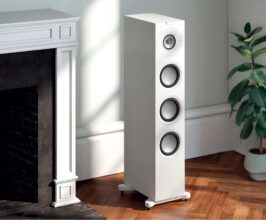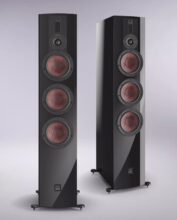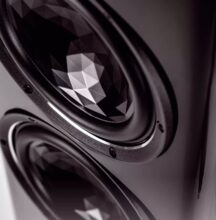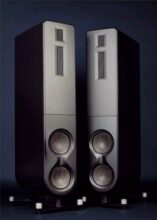Monitor Audio Silver 300 7G Review
Monitor Audio Silver 300 7G and Roksan Attessa Streaming Amplifier: A Match Made in Audiophile Heaven
In the world of high-fidelity audio, the pairing of components is crucial to achieving sonic perfection. In this review, we dive into the synergy between the Monitor Audio Silver 300 7G loudspeakers and the Roksan Attessa Streaming Amplifier. These two components, each formidable in their own right, come together to create an audio experience that is both powerful and refined.
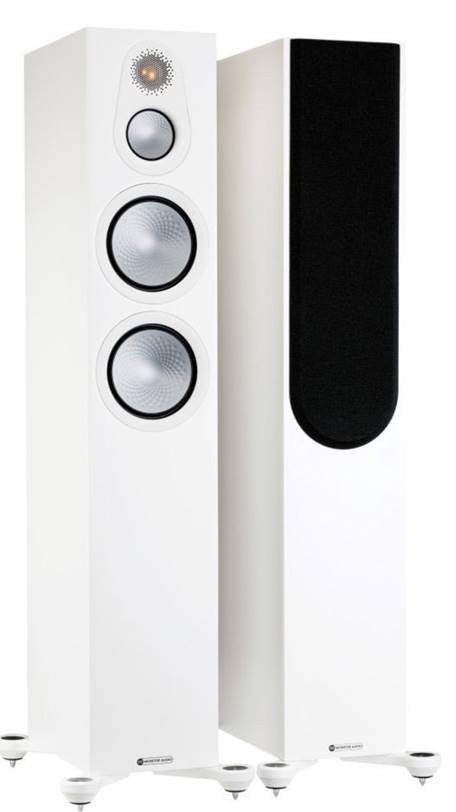
Monitor Audio Silver 300 7G: A Refined Classic
The Silver series from Monitor Audio has long been a staple in the audiophile community. Known for its balance between quality and affordability, the Silver series sits comfortably between the Bronze and Gold series, offering a perfect blend of performance and value. The Silver 300 7G, now in its seventh generation, continues this tradition with several enhancements.
Visually, the Silver 300 7G stands out with its sleek design and robust build quality. The new iteration features updated drivers, including a newly designed tweeter grille and subtly modified membranes. These changes might not be immediately noticeable to the casual observer, but they make a significant impact on performance. The stand-out feature of the Silver 300 7G is its ability to deliver a frequency response from 31 Hz to 35 kHz, offering impressive detail and clarity across the entire spectrum. The speakers have an impedance of 8 ohms and a sensitivity of 87.5 dB, making them a great match for powerful amplifiers.

Roksan Attessa Streaming Amplifier: Power and Precision
After a lengthy development period, the Roksan Attessa Streaming Amplifier has finally hit the market. This all-in-one amplifier includes a network streamer powered by BluOS, ensuring a seamless and high-quality streaming experience. The Attessa Streaming Amplifier is designed to deliver powerful, precise sound with a focus on transparency and detail.
The amplifier’s design is both modern and functional. It features a unique internal antenna system for wireless connectivity, eliminating the need for external antennas and maintaining a clean aesthetic. The amplifier is built around a robust power supply, including a large toroidal transformer, ensuring ample power delivery to drive demanding speakers. The inclusion of a phono preamp adds versatility, allowing for high-quality playback of vinyl records.
The Perfect Pairing
When paired together, the Monitor Audio Silver 300 7G and the Roksan Attessa Streaming Amplifier create an audio system that is greater than the sum of its parts. The Silver 300 7G’s musical transparency and detailed bass response are perfectly complemented by the Attessa’s powerful and precise amplification. This combination offers a wide and deep soundstage, with clear imaging and impressive dynamics.
In our listening tests, the pairing excelled across a variety of genres, from classical and jazz to contemporary electronic music. The speakers’ ability to render fine details and subtle nuances was matched by the amplifier’s capacity to deliver powerful and controlled bass. This synergy ensures that the music is presented with both accuracy and emotion, making for an engaging and enjoyable listening experience.
Specs
Type: Three-way, bass-reflex loudspeaker
Drivers: 1″ dome tweeter, 3″ midrange, 6″ woofer (x2)
Frequency response: 31Hz-35kHz (-6dB)
Sensitivity: 87.5dB
Nominal impedance: 8 ohms (4 ohms minimum)
Dimensions (including outrigger feet and spikes): 10.75″ x 41.2″ x 15.25″
Weight: 43 lbs.
Verdict
The Monitor Audio Silver 300 7G and Roksan Attessa Streaming Amplifier are a formidable duo, offering exceptional performance at a relatively affordable price point. The Silver 300 7G’s detailed and dynamic sound is brought to life by the Attessa’s powerful and precise amplification, making this pairing a standout choice for audiophiles seeking high-quality sound without breaking the bank. Whether you’re a seasoned audiophile or a newcomer to high-fidelity audio, this combination is sure to impress with its blend of power, precision, and musicality.
Monitor Audio: Silver 300 7G - A Legend Reborn
The 7th generation of Monitor Audio's Silver range is finally here and we have been having an absolute blast with them. The real ...






